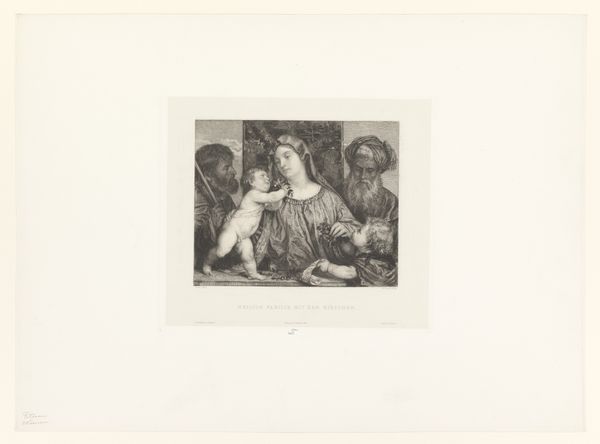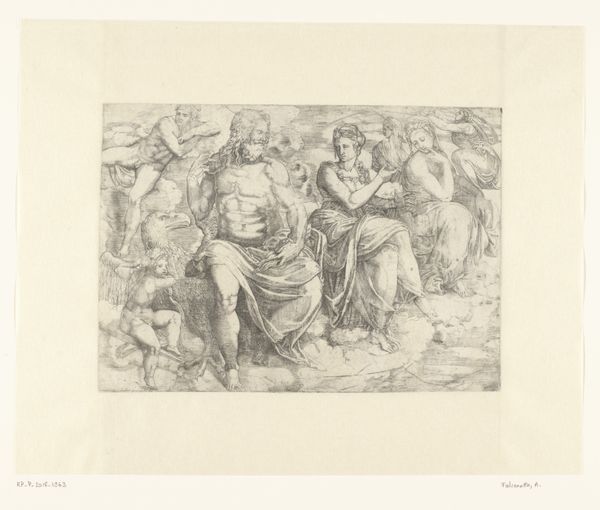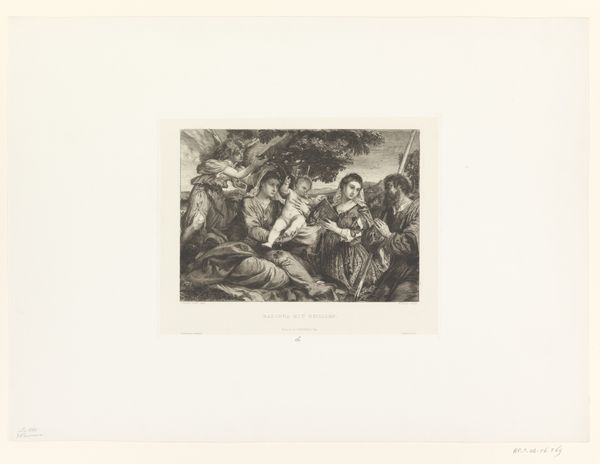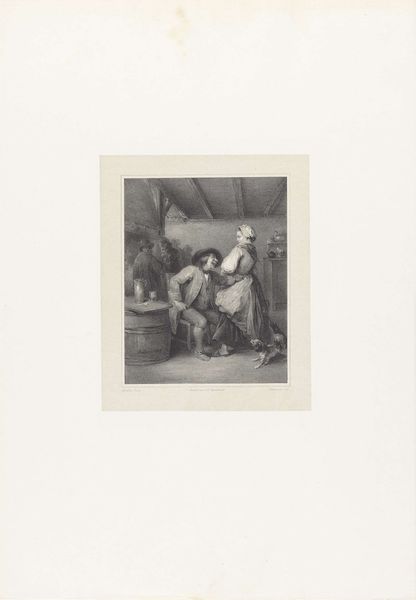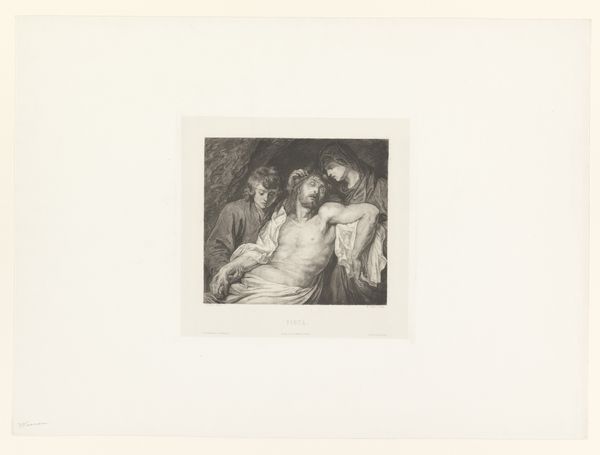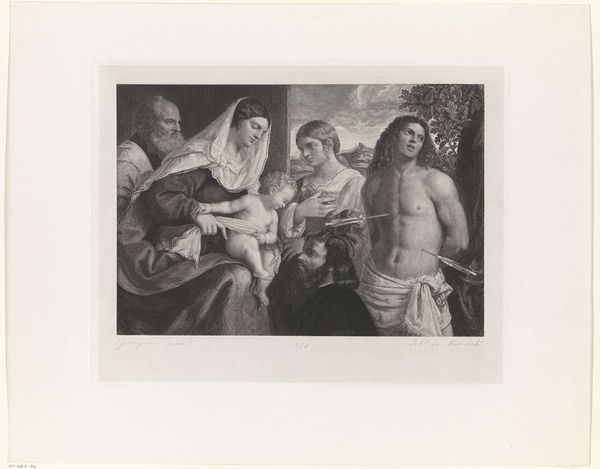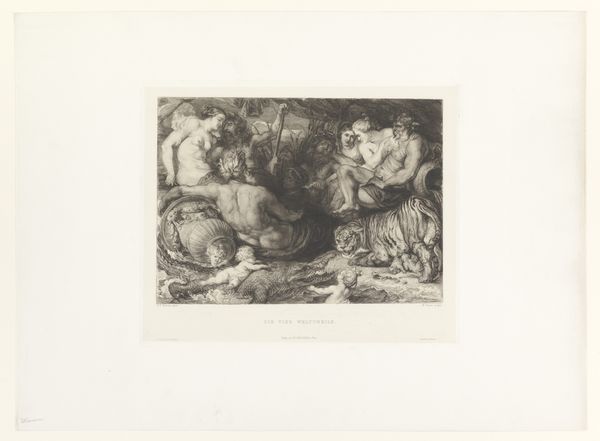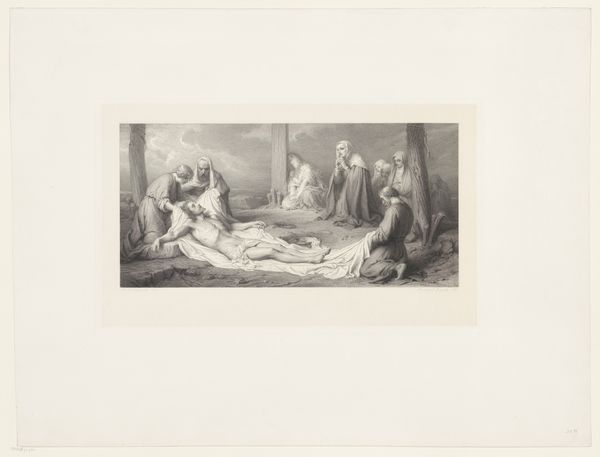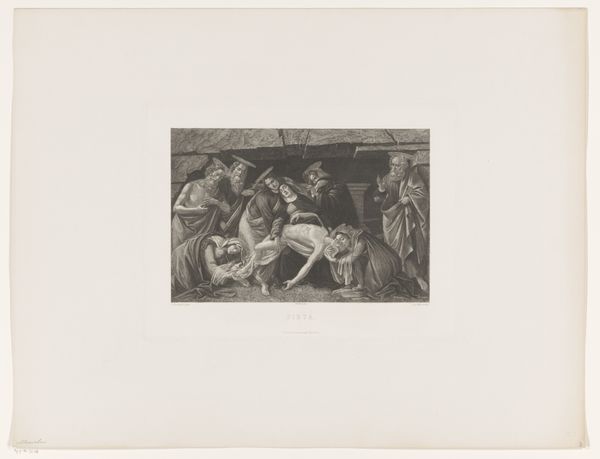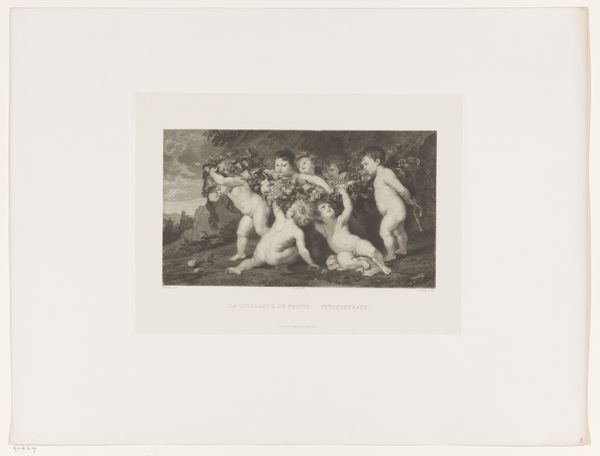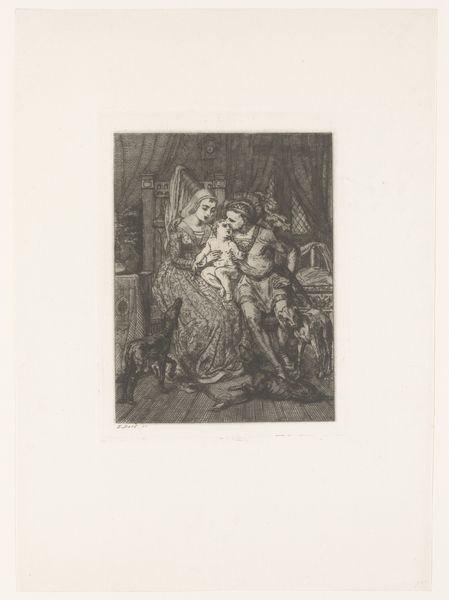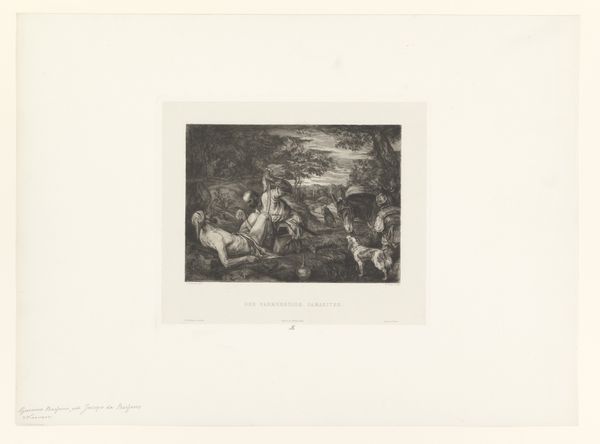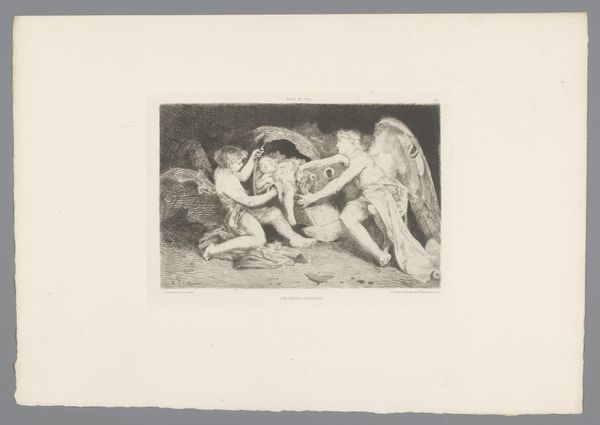
drawing, print, engraving
#
portrait
#
drawing
#
narrative-art
# print
#
figuration
#
carved
#
history-painting
#
tonal art
#
academic-art
#
engraving
#
realism
Dimensions: height 248 mm, width 284 mm
Copyright: Rijks Museum: Open Domain
Curator: Gazing at William Unger's "Pieta," dating somewhere between 1861 and 1889, the scene immediately evokes a powerful hush, doesn't it? The figures, shrouded in soft grey tones, convey such raw grief. Editor: It certainly does. My first thought, seeing this engraving, is about the labor involved. The precision, the patience required to carve that image out. And, look how printmaking makes this scene so widely available, it becomes almost a consumer product, right? Mass-produced sorrow. Curator: Consumer product… perhaps. But doesn’t the exquisite detail draw you in? Notice the minute cross-hatching, giving depth to Mary’s veil, the delicate way the light catches Christ’s prone figure. There's a haunting beauty amidst the devastation, a mother’s endless lament captured for eternity. Editor: True, but let’s think about what "eternity" really means here. This is late 19th century. Engraving as a medium is tied to that historical moment, right? To burgeoning print culture, expanding literacy, the rise of illustrated news. This Pieta speaks just as much to those developments as it does to religious iconography. It’s reproducible grief in an age obsessed with documentation. Curator: I concede to that. I am curious about his other narrative works, because the "history" here feels secondary to an almost dreamlike emotional space. The surrounding angels... the soft almost smoky presentation really emphasizes how love can linger as something so pure it transcends even the bleakest, most bodily scene of death. Editor: And it transforms that most physical scene into a commodity. I am fascinated to imagine the role this specific print may have played to various Victorian consumers, or the other printed depictions of such a crucial religious icon which it was competing with at the time. Was it bought in remembrance? Distributed among prayer groups? Was the act of distribution even "holy," or a simple commercial transaction? Curator: It offers much to reflect on, doesn't it? It’s a complex conversation, this interplay between raw emotion and artistic creation. And between religious icons and everyday life through consumer products. Editor: Absolutely. A scene so powerfully rendered through intensely labored production, ready to be consumed, reflected upon. Or just another household good.
Comments
No comments
Be the first to comment and join the conversation on the ultimate creative platform.
